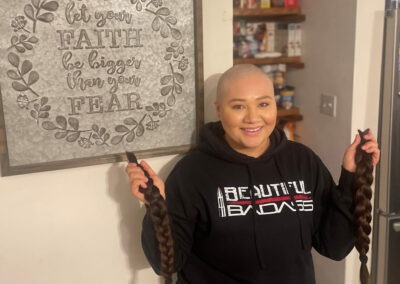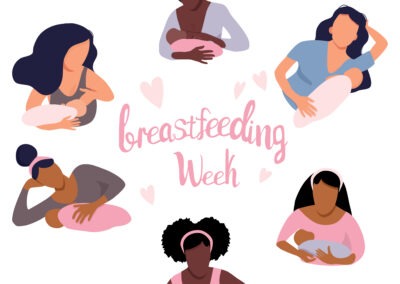An in-depth look at the innovative work of our Behavioral Health team to reduce barriers to mental health services for our rural patients.
 The Need for Mental Health Care
The Need for Mental Health Care
There is no question that a lack of access to proper mental health care is one of Central Oregon’s biggest public health struggles. Every day Mosaic providers acutely feel the impact of poor access to specialty mental health care for our patients. Our patients feel the impact too. So much so that their collective voice has elevated improving timely access to specialty mental health services as a top priority for our state and region to address.
State and National Statistics
According to the U.S. Centers for Disease Control and Prevention, 25% of American adults suffer from a mental illness. Almost half of Americans will experience a mental health issue at some point in their life, or someone close to them (peer or family member) will be impacted with a mental health concern. It is estimated that 15 million American children are in need of specialty mental health services. To further compound matters, of all the 50 states plus the District of Columbia, Oregon ranks 49th in the nation for access to mental health services. And Oregon is one of the states with the highest percentages of mental illness.
Furthermore, Oregon has severe mental health care provider shortages, with no less than one mental health care provider for every 1,000 people. Even Bend is considered a mental health care provider shortage area according to the Health Resources & Service Administration (HRSA).
Mental Health and Physical Health
Individuals with poorly treated or under-treated mental health conditions have greater health issues compared to the general population. For example, individuals with depression are twice as likely to develop type 2 diabetes mellitus. And their risk for stroke and myocardial infarction is three-and five-fold times higher than people without depression. Mental illness in general is associated with an increased risk of hepatitis, tuberculosis, and poor dental health. It has been estimated for individuals who have severe and persistent mental illness (e.g. those with schizophrenia, bipolar disorder) that life expectancy is reduced by at least 10 years as compared to the general population.
Individuals with mental health conditions use a significant number of health care services. For example, nearly 12 million visits made to United States hospital emergency departments in 2007 involved individuals with a mental disorder, substance use disorder, or both. While poor physical outcomes in individuals with mental health issues are related to many factors, fair access to skilled interdisciplinary care both in specialty mental health and medical settings are top contributors.
Innovative Solutions are Needed Now
Innovative solutions are needed to increase access to all forms of specialty mental health care, and they are needed now. Tele-mental health services which include tele-psychiatry is one of the most promising developments to provide patient-centered, affordable, and effective interventions for individuals in need of mental health care.
Mosaic Pilots Tele-Mental Health Visits
In an effort to improve access to mental health care in our rural sites, in June of 2019 Mosaic began a pilot program offering tele-mental health visits for adult patients at our Prineville clinic. Our pilot program includes both traditional specialty tele-mental health visits as well as a consultative model. Traditional tele-mental health visits treat approximately 30% of the population. The consultative model, called Collaborative Care, treats 70% of the population. Collaborative Care is also called consultative psychiatry and is a routine part of advanced primary care practice. If you are interested in learning more, visit the AIMS Center at the University of Washington website.
“In the consultative model, our tele-mental health providers provide our Primary Care Providers (PCPs) and Behavioral Health Consultants (BHCs) with expert advice on how to effectively treat the most common mental health conditions in primary care (e.g. depression),” said Kimberly Swanson, Ph.D. and Mosaic’s Behavioral Health Director. “Our patients in Prineville now have equitable and timely access to skilled interdisciplinary care right within their primary care medical home. We are proud to say we now offer 28 hours of tele-mental health services each week in Prineville.”
Tele-Mental Health Basics
“Tele-mental health generally refers to the delivery of mental health assessment and ongoing care via telecommunication technology,” said Michael Thomas, Mosaic’s Director of Technology and Clinical Informatics. “The patient is checked in at one of our clinics and roomed in a space set up for telemedicine. Staff ensures that the video and audio connection with the tele-mental health provider is established. The provider can be at another Mosaic clinic or any other location with an adequate internet location. The visit proceeds just as if the provider was in the room with the patient. The provider documents in Epic at their location, then notifies the clinic staff that the visit is over and terminates the connection.”
Tele-Mental Health Providers
At Mosaic, our tele-mental health providers include the following:
Care Manager: A licensed clinical social worker. Our Care Manager is different from a Behavioral Health Consultant working in our clinic in that she/he provides a slightly longer and more in-depth behavioral treatment for a variety of health and mental health conditions.
Psychiatric Mental Health Nurse Practitioner: Has completed an advanced nursing degree and specializes in psychiatry. Our Psychiatric Mental Health Nurse Practitioner assesses, diagnoses and treats mental health conditions to help manage symptoms resulting from psychiatric or substance disorders. They are an expert in psychopharmacology and have in-depth experience and knowledge of psychiatric medications and how to prescribe them effectively.
Tele-Mental Health Versus Face-to-Face Visits
Some patients and providers have expressed concern that patients are not getting comparable care via tele-mental health versus conventional face-to-face visits. However, research indicates tele-mental health is just as satisfying, more cost effective, well accepted by patients and equally as impactful as in-person visits. Additionally, there is some emerging evidence that some patients may actually prefer tele-mental health visits to in-person treatment. Learn more: Telepsychiatry Effectiveness and Feasibility
Tele-Mental Health and the Patient
In most cases the process of getting specialty mental health help for a patient changes little about the patient experience. Patients at our Prineville clinic first visit their PCP or BHC to discuss their concerns. The PCP or BHC then creates an internal referral to see one of our tele-mental health providers, and Prineville clinic front desk staff or HIT-Referral staff schedules the patient appointment for tele-mental health. The patient is seen within our Prineville clinic, and they check in for their tele-mental appointment like they would for any other appointment. Any follow- up appointments are conducted in the much the same way.
Patient Privacy
“Though our patients have not voiced concern about privacy while accessing tele-mental health, our telemedicine equipment and network protocols are HIPAA compliant,” said Thomas. “Recently, Mosaic has worked with OCHIN to embed telemedicine within EPIC (our electronic medical record system). This simplifies the entire process by allowing the video visit to launch right from EPIC instead of a separate application. Video awareness within EPIC scheduling functionality becomes much easier. With integrated video during these visits, the availability of a patient for the audio/video link up becomes evident, simplifying communication, and keeping it in the EPIC schedule view.”
The Provider’s Perspective
Our rural providers in Prineville have been supportive and enthusiastic about the addition of telepsychiatry services.
“We all have recognized the fact that our community has not had adequate access to mental health care services. Since we started this pilot, the feedback from the providers has been very positive. We’ve all seen positive changes in PHQ9 scores of patients that have been referred to telepsychiatry,” said Diana Burden, Prineville Clinical Medical Director. “In addition, we’ve had positive anecdotal responses from our patients when they have followed up with us in the clinic.”
Collaboration with our telepsych providers has been very congenial. The initial guidelines that were developed provided a clear foundation for communication, as well as practice policy. The pilot leadership group solicits feedback from the provider group regarding communication between providers, and determines if there are any changes that need to be made with regards to clinic or procedure flow. In addition, Prineville providers have monthly joint meetings to discuss the patients we share with our tele-mental health providers. This ensures that we are meeting the needs of our patients. We also have daily access to the tele-mental health providers if we feel we need to discuss mutual patients with urgent needs more frequently.
“Overall, the provider group in Prineville feels very positive about the addition of our telepsychiatry services, and we look forward to our ability to expand to the pediatric population in the future,” said Burden.
The Clinic Perspective
“As with many changes, piloting telepsychiatry seemed daunting to our team in the beginning. There were not only logistical challenges (support staffing, space, etc.), but also doubts about our community’s willingness to engage with the program,” said Laura Pedraza, Prineville Clinic Manager. “Thanks to the thorough preparation that went into implementing the program, these fears were quickly dispelled. To our surprise, patients were willing to give telepsychiatry a chance, and then kept coming back!”
The positive community response assisted our decision to commit to staffing additional time with a Medical Assistant in order to expand program hours. We currently have tele-mental health services available 28 hours each week.
“Thanks to careful provider selection, we have engaged and caring telepsychiatry providers who partner well with our team and patients in the delivery of tele-mental health services,” said Pedraza. “We are happy to say that the telepsychiatry program has now been fully adopted as an extension of our clinic’s services.”
On the Horizon
- On January 27, 2020, we are excited to expand our Prineville pilot program to include children and adolescents. Crook Kids (School-Based Health Center) will also be able to refer their patients for tele-mental health services.
- In the spring of 2020 we will expand tele-mental health to our Madras Clinic and Madras High School Based Health Center. We are thrilled that our tele-mental health providers for Madras are also bilingual and bicultural.
- We are exploring the idea of leveraging technology within Mosaic through “Tele-BHC.” Other Federally Qualified Health Centers (FQHCs) in Oregon have begun using a similar model e.g. Yakima Valley Farm Workers Clinic. Through Tele-BHC we envision being able to cover all six of our School-Based Health Centers 100% of the time as well as improve mental health support and coverage at all Mosaic clinics.
Special thanks to Mosaic’s Behavioral Health team for preparing this overview of our Tele-Mental Health pilot program in Prineville. For article citations and further information please contact Kimberly Swanson, Ph.D. Mosaic’s Director of Behavioral Health at [email protected].



0 Comments